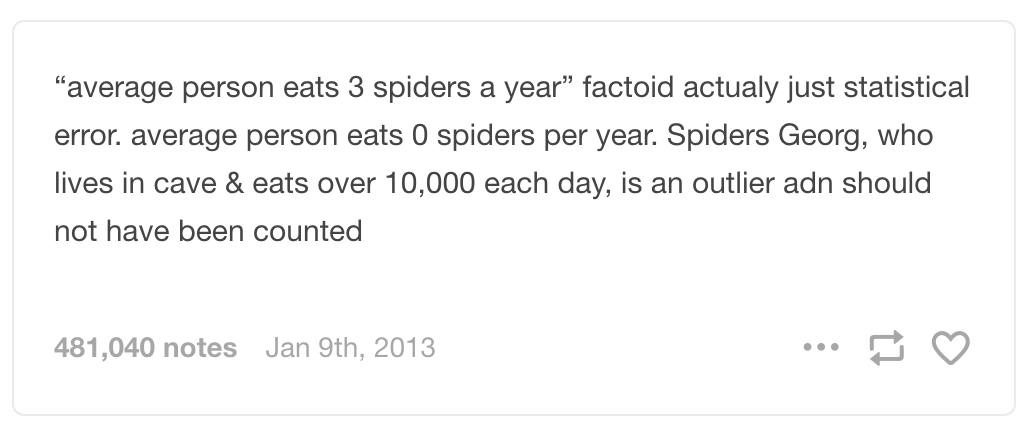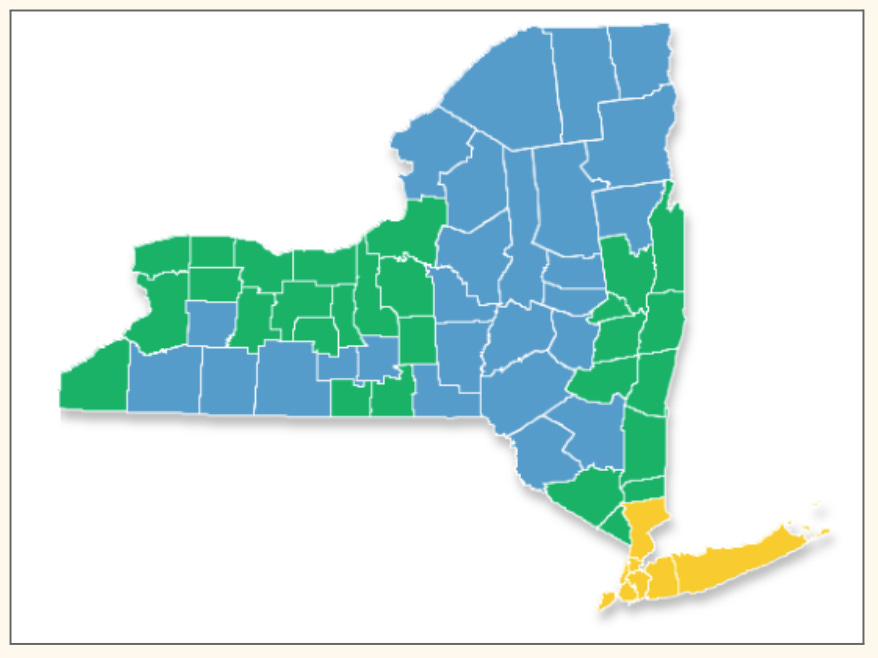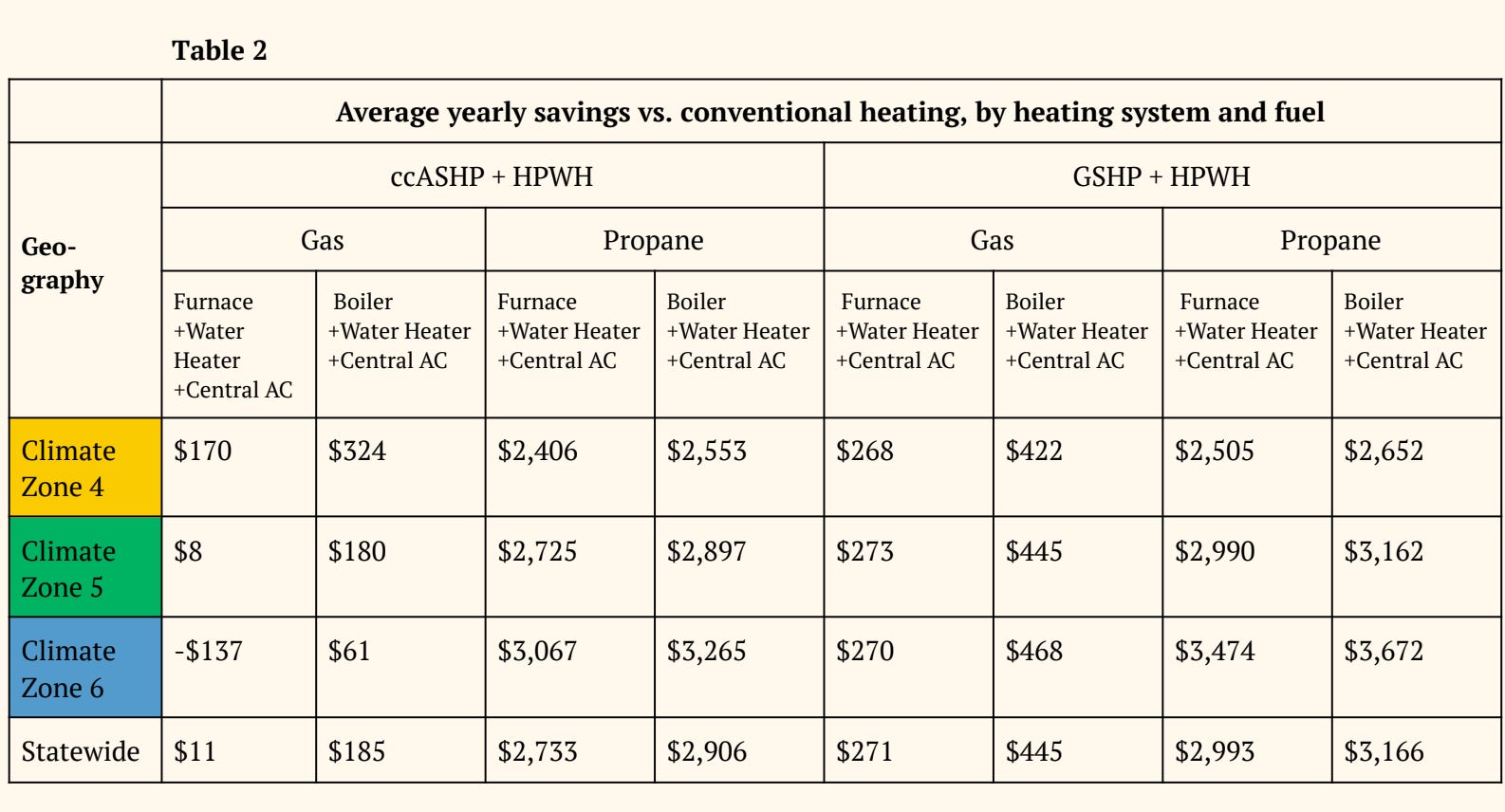A heat pump lesson from Spiders Georg
The average new single-family home in New York would save its owners $904 a year if built with electric heat pumps. Is that typical?

I’m headed into my first full Catskills winter with new cold-weather electric air-source heat pumps.
It’s a surprisingly social experience. I feel like my whole neighborhood is watching to see if I’ll save money or freeze to death.
I’ve been getting stopped in the street a lot lately by neighbors who are curious about how my new heating system is doing. Although they’ve made inroads in other notoriously cold places, like Finland and Maine, heat pumps are still a rather exotic technology in upstate New York.
With propane around $3.50 a gallon statewide, and home heating oil pushing $6 in some places, my neighbors’ interest is hardly academic. New York’s Clean Heat Program, which offers subsidies for heat pump retrofits, is on a mission to advertise electric heat pumps as a cost-saving choice. Experts tend to agree: Compared to fossil fuel systems, heat pumps are expensive to install and cheap to operate. But how cheap?
So far, my heat pumps are doing just fine. In the two months between mid-September and mid-November, NYSEG tells me I’ve racked up a total of 2009 kWh for the whole household’s electricity use. That’s up from 1301 kWh for the same time period in 2021, before the heat pumps went in. It’s been relatively mild out so far, but less than $100 for two months of early-season heat, in a 2,300-square-foot Victorian: Pretty damn good for upstate New York.
I expect my power use will spike when the really deep cold sets in. But I’ll be honest, I don’t fully know what to expect. I’m betting on physics: Heat pumps don’t actually generate heat, they just move it around between your house and the great outdoors. By making good use of existing thermal energy instead of creating their own, they can reach absurd-sounding efficiency levels of more than 300 percent.
It’s tough to find reliable real-world math on whether heat pumps make economic sense for a household. Every house is different. A lot of HVAC professionals, even those with long expertise, are still in the early stages of the heat pump learning curve. Volatile prices in both fossil fuels and electrical power don’t make the task any easier. So I was pretty excited when a study on heat pumps came out last month, with dollar figures on the expected impact of new-building electrification on household energy savings in New York.
What that study found: Up here in the rural Catskills, we are all Spiders Georg.
When an average isn’t typical — and what it means for climate policy
The study, by a think tank called Win Climate, found that for newly-built single-family homes, choosing to build with electric heat pumps instead of a furnace or boiler would save a homeowner an average of $904 a year.
The study didn’t look at retrofits, alas. There’s a lot more variation to deal with in that realm. It also didn’t look at comparisons with fuel oil: I asked one of the study’s authors about that, and he told me that although a lot of existing homes in upstate New York currently rely on fuel oil, few builders are putting it in new construction.
As a slice of the state economy, buildings are New York’s worst climate offender, accounting for almost a third of the state’s overall emissions, and one of the toughest sectors to decarbonize. If choosing heat pumps during construction saves money for homeowners down the line, that’s very good news for climate policy advocates.
But averages are funny things. Look closely at Win Climate’s figures, and a fuller picture emerges. In most of New York, if the alternative is a natural gas furnace or boiler, heat pumps offer a little bit of savings, but nowhere near $904.


When the main alternative is propane, on the other hand, the figures are astonishingly high. Here in colder Climate Zone 6, where I live, choosing air source heat pumps over a propane furnace yields an estimated $3,067 in savings a year. Zone 6 is the only part of the state where a natural gas furnace wins by a nose as the cheapest option in new construction — but much of Zone 6 is rural, and most rural households have no access to natural gas service, relying heavily on costly trucked-in fuels and firewood.
In the Dutchess County city of Beacon last week, climate advocates turned out in force to a city council meeting to speak in support of a proposed ban on gas-burning appliances in new construction. I reported on it for the Times Union. Multiple people at the meeting cited Win Climate’s numbers on average household savings.
For Beacon Climate Action Now, the all-volunteer group pushing for the legislation, it was an important priority that city climate legislation shouldn’t cost residents money.
“If it’s the same cost or cheaper, that addresses our concerns. We don’t want to exacerbate the cost of housing around here,” BCAN’s Veekas Ashoka told me.
If Win Climate’s assumptions in the study are correct, electrifying new construction will probably save future Beacon residents some money. Just not as much as the statewide average.
Climate policy heats up
If Beacon passes a “gas ban” bill for new construction, it will be the third city in New York State to do so, behind New York City and Ithaca.
New York State may act on that front as well. The state Climate Action Council is currently in the last stages of finalizing a plan for decarbonizing the state economy over the next few decades, and that plan is likely to recommend to state policymakers and legislators that new buildings should be all-electric starting in 2025.
The funny thing about municipal gas bans in New York is that so far, they are happening (and popular) in places where most homes have natural gas service, and won’t see much savings from the law. In rural areas, where heat pumps drive truly enormous savings, political pushback on the electrification of new construction is much fiercer. There’s a certain irony here. (To be fair, there are also bigger issues in rural areas with the reliability of electrical power, which is a topic we’ll get into in future issues of this newsletter.)
The uneven economics of energy savings from electrification is one reason why New York’s largest source of greenhouse gas emissions probably won’t be tamed without “gas ban” legislation for new construction, and generous incentives for heat pump retrofits (some of which will be available through the federal Inflation Reduction Act, starting in 2023). Another reason is that for rental housing, there is often little incentive for landlords to keep utility bills low.
For my part, I’m happy to be Spiders Georg. Good riddance to the propane forced-air furnace and the 430 gallons I burned in it last year, even despite the woodstove that I fed three full cords of wood to. The main question for me isn’t whether the heat pumps are slashing my energy bills, it’s how much.
I’ll be tracking my power use throughout the winter, and I’ll keep you posted.
FURTHER READING: Check out this peer-reviewed study that came out in Environmental Research Letters last year, which takes a nationwide look at the economic, greenhouse gas, and health-related air pollution benefits of retrofitting houses with heat pumps in the U.S. Lots to unpack here, as they say — but one lesson here is that local conditions matter. Local weather, how dirty the local power grid is, local housing stock and typical fuels: All have an impact on the expected environmental and cost impacts of retrofitting a house with heat pumps.
IT’S GIVING NEWSDAY: Every day is a good day to support local journalism. On the Tuesday after Thanksgiving, fund drives for local news have become an annual tradition.
I’ll try not to harass you all too much, but your paid subscription to Empire of Dirt directly supports local independent climate and environment reporting. Plus you will get my profound thanks, a weekly news digest, and occasional other subscribers-only stuff. (I’m not going to say “content.” That word gives me stress ulcers. You will be getting stuff. Good stuff, I hope. —Ed.)


